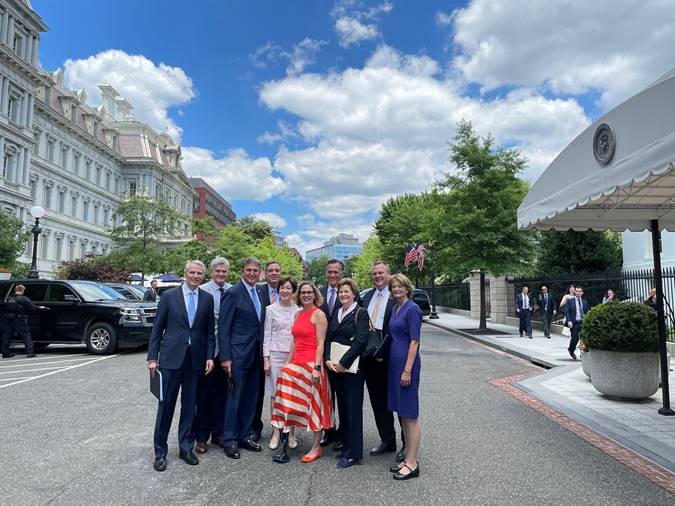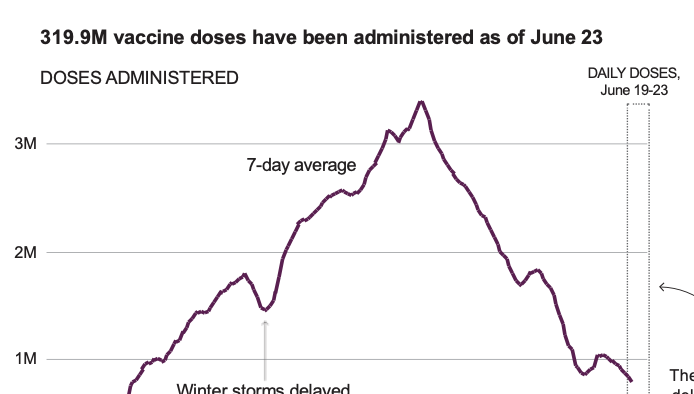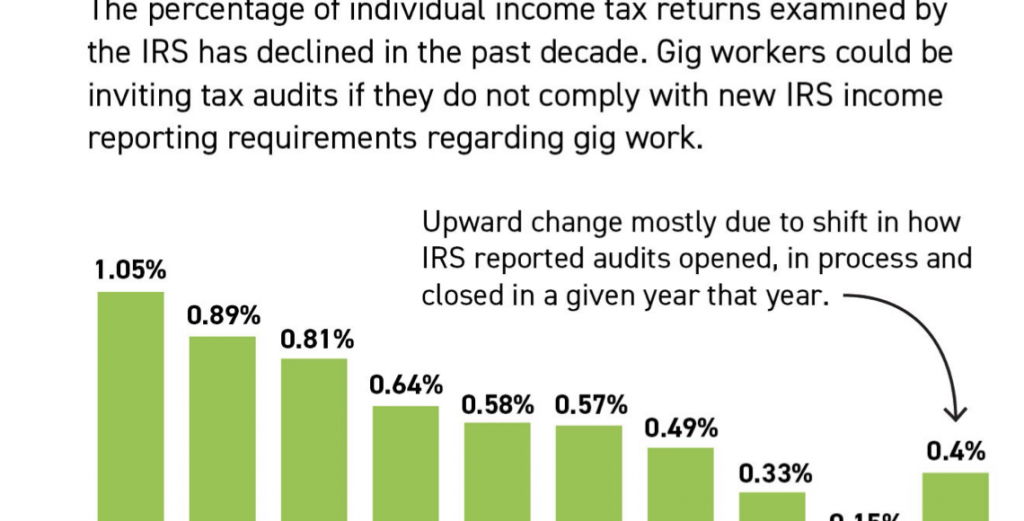More Info: Michael DiMaria | Partner and SW Regional Director | 602-717-3891 | [email protected]
Thanks for your interest in Washington, and for reading This Week in Washington.
Patrick Robertson writes about the round-and-round (and round) negotiations we’ve seen on infrastructure in this issue’s Washington Whispers. Todd Smith and Blake T. Fulenwider take a closer look at the Supreme Court’s latest defense of the Affordable Care Act, Al Jackson updates us on activities impacting the defense sector, and Ramona Lessen summarizes a Senate Commerce hearing on building resilient networks.
Congressman Erik Paulsen has a special and vitally important Total Spectrum Spotlight interview with Jay Timmons, the President and CEO of the National Association of Manufacturers.
This is the last This Week for our friend and colleague Erica Wrublik, who is leaving the Arizona Chamber. Dana Marston and I wrote a short article about Erica’s great help and assistance in producing This Week and Total Spectrum Spotlight.
The Senate and the House will be on their summer recess the week of July 5th. Total Spectrum Spotlight will take July and August off, but will return in September. We will return on July 14th with the next issue of This Week in Washington. Stay safe and have a wonderful Independence Day holiday.

Steve Gordon, Managing Partner
Washington Whispers
By Patrick Robertson, Total Spectrum Strategic Partner
The infrastructure debate continues apace, even as the path to spending hundreds of billions of taxpayers’ dollars remains unclear. This week, President Biden’s team agreed on a framework with a bipartisan group of lawmakers – the size of the group remains in flux but is north of 20 – to discuss whether there is a way to move forward with a package that will get more than 60 votes in the U.S. Senate. The alternative, as you have read in this space many times before, is for Democrats to use the budget reconciliation process to pass a bill with 50 Democratic votes in the Senate.
At this point, it is beginning to feel a little like the Bill Murray movie Groundhog Day where the main character relives the same day thousands of times over. Since President Trump took office in 2017, the political world has been focused on infrastructure and how to expand the federal government’s role. Now, during the Biden presidency, if you go back to the archives of any newspaper, you will find an article with a headline like, “This week key for infrastructure talks” for every week since mid-January.
Those outside of Washington, D.C. wonder if the political chattering class is really the boy who cried wolf and that feels like a very fair metaphor for these talks – as does Groundhog Day. Now that negotiators reached a deal, it is fair to say that history will look back at mid-June as one of the key inflection points in these discussions.
Although the bipartisan group of Senators (which apparently does not yet have a catchy gang name) and the White House released some paper on its $1.2 trillion infrastructure deal, the proposal is lacking most details. It does include paying for the proposal with the expansion of the gas tax, which the White House has said both publicly and privately it will oppose. With that being said, this proposal is the result of all of the previous work that we have recapped in this space – partisan ideas, bipartisan negotiations, the American Jobs Plan, and so many others.
But bipartisan talks are running out of time. President Biden originally set a deadline of Memorial Day for talks with Senator Shelley Moore Capito, who had the proxy of Senate Minority Leader Mitch McConnell, to reach an agreement. Just before that deadline the two of them broke off talks and in a bipartisan-infrastructure-talks-are-dead-long-live-bipartisan-infrastructure-talks moment, the current bipartisan gang took up the leading mantle of the negotiations. As of last night, Majority Leader McConnell would not commit to supporting the agreement and Democratic leaders put some major caveats on their support.
Now, pools are open across the country, COVID restrictions are lifted, school is out, and Memorial Day is in summer’s rearview mirror. If bipartisan talks cannot produce a bill, Democrats want to move to a budget reconciliation process. While there is an agreement at this point, there is a long way to go to produce legislative language and if Democrats are insisting on budget reconciliation moving at the same time, we have a very long way to go.
From the outside that sounds simple, but budget reconciliation requires a great deal of work by the majority party. They have to propose and pass a budget in the House and Senate with a vote-a-rama in both the Senate Budget Committee and the full Senate where 50 votes passes any amendment. In addition, the bills the House and the Senate pass must be identical or any differences will need to be resolved.
Once all that is done, individual committees will take their reconciliation instructions and revenue targets and mark up bills that will then go to the budget committee to put into one package that will move to the Floor. This has to happen in both the House and the Senate.
All of this is to say that Democrats need time to move something through budget reconciliation – lots of it.
In the meantime, the Democrats’ two most outspoken moderates, Senators Kyrsten Sinema (D-AZ) and Joe Manchin (D-WV), have said they would prefer to move infrastructure legislation in a bipartisan manner. Senate Majority Leader Chuck Schumer (D-NY) is working to see if anything can move through the Senate on a bipartisan basis. He is skeptical at best but needs to make the effort for moderates to see if they are willing to take a partisan approach.
If Democrats allow bipartisan talks to continue into the fall, as they did when they ultimately passed the Affordable Care Act through reconciliation, they would jeopardize the ability to do what is needed before the peak of next year’s election season.
This is not just another key week for infrastructure. It is the moment when Democratic leaders and the President need to decide how they will move forward and get to work.
Republicans are hoping to strike an infrastructure deal to ward off the nearly $6 trillion in spending and tax changes Democrats have discussed. Their theory is if a $1 trillion-plus plan passes, there will be little or no appetite to do another giant reconciliation bill.
We will soon find out if Bill Murray’s Phil Connors gets out of his February 2 repeated day in Punxsutawney, Pennsylvania.

Total Spectrum Spotlight
On this week’s Total Spectrum Spotlight, Jay Timmons, President and CEO of the National Association of Manufacturers, joins Congressman Erik Paulsen to discuss infrastructure investment, the potential impacts of domestic and global tax reforms being considered, and why the Southwest U.S. is so appealing to businesses. They also touch on future workforce concerns, which the NAM hopes to address through its Creators Wanted campaign, designed to connect emerging and displaced workers with higher paying careers in manufacturing.
A job always well done. A note of appreciation to Erica Wrublik
By Steve Gordon and Dana Marston
We have to say so long today to Erica Wrublik, who is leaving the Arizona Chamber family on June 30 after serving with great distinction for over 10 years.
This Week in Washington-Arizona and Total Spectrum Spotlight are produced as a joint effort between Total Spectrum and the Arizona Chamber. Our team writes the articles and both records and produces the interviews, and very often we are editing right up to deadline so we can ensure that we are sending the most accurate and timely publications possible. But then it is up to our colleague at the Arizona Chamber to do the technical things that turn the articles into This Week and video interviews into Total Spectrum Spotlight.
Erica Wrublik was assigned to us in April of last year – about the time that we were asked by the leadership of the Arizona Chamber to take This Week to the next level and to create an interview series. She worked with us to lay out the structure and the visual presentation for both publications and then helped us fulfill the vision and objectives of This Week in Washington and Total Spectrum Spotlight in each issue.
She wants to find her passion in Idaho, and we will start working with someone new in July. But we will always be grateful for the help she provided taking us to the next level – and always making it look easy.
Erica, thank you for your great contribution to the success of This Week and Total Spectrum Spotlight. Thanks for a job always well done.
SCOTUS Strikes Again – Now What?
By Todd Smith, Partner and Georgia Group Chairman and Blake T. Fulenwider, Partner and Chief Health Policy Advisor
In case you have been on vacation (good for you), on a news media blackout (also, good for you), or just under a rock (who could blame you), then we have a health care news flash for you – the Supreme Court has ruled that states don’t have standing to challenge the individual mandate included in the Affordable Care Act (ACA). This marks the third time a Supreme Court ruling has defended the controversial law.
So, now what? Where do things go from here? Well, it depends upon your perspective. Democrats are rejoicing, believing repeal efforts to now be dead and buried, and leaving the ACA open to expansion with provisions such as a public option. They also believe this latest Supreme Court ruling will compel governors in holdout states to finally expand Medicaid as the ACA originally contemplated.
As loath as they may be to admit it, Democrats agree with Republicans in that the ACA does have its problems, such as large deductibles and high premiums. In the Democrats’ COVID relief package from earlier this year, ACA subsidies were temporarily increased. Efforts have already begun to make these increases permanent. Overall, the number of Americans who have health insurance – whether through Medicaid or marketplace plans – is at the highest level it has been since ACA was passed. Generally, once the government giveth, it becomes demonstrably more difficult to taketh away. That is, unless you are talking about your income tax returns.
Expect Democrats to push for Medicare-negotiated drug prices, the lowering of the age eligibility for Medicare, as well as an expansion of benefits like vision, dental and hearing. Oh, and don’t forget that thing called “Medicare For All.”
“Closing the Medicaid Gap” in states that have not expanded Medicaid is also a phrase that will be thrown around. Democrats consider the expansion to be a key part of the ACA. However, a 2012 Supreme Court decision ruled that states could not be forced to expand Medicaid, thus making it optional. To date, 12 states have not done so.
Democrats and the Biden Administration have already tried to prod states into expanding Medicaid by including renewed financial incentives in the stimulus package passed earlier this year; however, no state has used these incentives thus far. You can be sure that the White House and Democrats in Congress aren’t giving up on this key priority of the ACA. Both are currently working on approaches toward getting Medicaid expansion across the finish line. One approach includes circumventing state opposition by allowing counties and other local governments to expand Medicaid. Whatever approach is taken, you can be sure it will follow the President’s early pledge to “build upon the ACA.”
Now, the Democrats are not all in lockstep on the policies or how to proceed. Even the White House appears to have softened its approach for varied reasons on various fronts. Aside from health care, there are other policy decisions in play such as infrastructure. Both seem to be driven by legislative procedural decisions and the desire to get everything they want now no matter the cost. (This begs the question of what falls under the umbrella of “infrastructure.” For both the White House and Congressional Democrats, this definition seemingly goes well beyond the roads, bridges, railways, and broadband that come to mind.)
As for Republicans, Justices Alito and Gorsuch, in their dissent, give hope to those who might still see life in legal action. This, of course, remains to be seen. Regardless, Republicans remain steadfast in their belief that the expansion of government isn’t the solution to a health care system which should be transparent, cost-effective, patient-centered and offer choice.
You can expect Republicans to work with Democrats where they can and oppose them on certain aspects when they cannot. Unfortunately, the political environment surrounding health coverage has not softened much since the debate of the ACA over a decade ago. There will be plenty to argue about. Let’s just hope this time Congress doesn’t have to pass it before they know what’s in it.
Defense Update
By Al Jackson, Total Spectrum Strategic Consultant
The Defense Department is making cuts to legacy ships and aircraft across the Navy and Air Force and reducing end strength across the force as part of its Fiscal Year 2022 budget, the department announced on Friday, May 28. The administration is proposing a total of $715 billion for the Defense Department in 2022. That is $11.3 billion, or 1.6%, more than was enacted for FY2021, however, the increase is less than the anticipated rate of inflation, meaning the budget would slightly decline in inflation-adjusted dollars.
The divestiture of these legacy programs is being made to focus funding toward innovative technologies including artificial intelligence, hypersonic technology, and cyber capabilities. “The budget shifts resources away from older platforms and systems that are ill-suited to the current and future threat environments,” said Anne McAndrew, the Pentagon’s acting comptroller. Hence, a major increase in funding for research, development test and evaluation (RDT&E) accounts was proposed to the tune of $112 billion, which represents a $5.5 billion or 5% increase over levels enacted in FY2021. This increase is the largest RDT&E request in the history of the department. Meanwhile, the fiscal blueprint would slash military procurement by $8 billion, or nearly 6%, to $133.6 billion.
The $715 billion proposed budget cuts $2.8 billion in equipment, with most coming from Navy and Air Force assets. Seven Ticonderoga-class guided-missile cruisers, four littoral combat ships, an amphibious warship, the remaining legacy F/A-18s and a dozen Mark VI patrol boats will be part of $1.2 billion coming from the Navy. These cuts also include the decommissioning of seven cruiser warships. According to Navy leadership, the savings from cutting legacy programs would be folded into the next set of budget planning included in the Future Years Defense Program (FYDP).
The Army was not spared in cuts, as their budget request of $173 billion for FY2022 represents a $5 billion reduction compared to last year’s request of $178 billion. Congress enacted $176.6 billion for FY2021.
The Air Force is cutting 201 aircraft, including 42 A-10 Thunderbolt II attack aircraft, 48 F-15C/D Eagle strike fighters and 47 F-16 Falcons for a savings of $1.37 billion. The Marine Corps has already been on an aggressive divestment drive to reshape the force for its new Pacific region focused strategy, as they move away from the Group III RQ-21 unmanned aerial systems (UAS) in order to procure more Group V UAS such as the MQ-9, which provides greater range, per their new strategy.
The Pentagon issued the new budget without the traditional FYDP five-year outlook that lays out a course for major programs. The request comes as the Pentagon and the White House are conducting high-level global force posture reviews that could change the worldwide laydown of U.S. forces. Pentagon leaders have said they are working on an update to the 2018 National Defense Strategy that put the department on a path to “great power competition” with China and Russia, while drawing down the low-intensity ground conflicts in the Middle East. The shift in focus goes from the Middle East to the Pacific region.
The department plans to spend over $66 billion on efforts related to the Indo-Pacific region, including the Pacific Deterrence Initiative, also known as PDI. That includes $5.1 billion in targeted investments aimed at developing and procuring capabilities in support of “joint force lethality,” including precision strike and stand-off systems such as advanced munitions. From the Pentagon supporting document, “[m]odernizing our military requires successful research, technology maturation, prototyping systems integration, and test capability to turn innovative and disruptive technology into fielded and sustainable military systems.”
The budget calls for across-the-board troop reductions from the Navy, Marine Corps, Army and Air Force of a few thousand each. Only the newly created Space Force will see a personnel increase, growing from 6,434 to 8,400. As it relates to the Navy, total sailor end strength including the Navy Reserve will drop to 404,800 from 407,329, which is largely based on the crew reductions from the ships that will leave the inventory.
Meanwhile, for the most expensive acquisition program in Pentagon history, the F-35 joint strike fighter, the administration wants to spend $12 billion for 85 planes, down from $12.9 billion enacted in 2021 for 96 of the jets. The Air Force, Marine Corps and Navy are buying A, B and C variants of the aircraft, respectively. Meanwhile, about $3.8 billion would go toward hypersonic weapons. The Army, Navy, and Air Force are pursuing ground-launched, sea-launched and air-launched versions, respectively.
Among the services, the Department of the Air Force, which includes the Space Force, fared best in the budget request in terms of top-line funding. It would receive a total of $212.8 billion in 2022, about $8.8 billion more than was appropriated for 2021.
The ship and aircraft cuts will likely face scrutiny on Capitol Hill among lawmakers, who traditionally have resisted taking military inventory out early due to the impact on jobs in their respective districts. Pentagon leadership, however, indicated they will continue to advocate for divestiture of legacy platforms that “overburden” readiness accounts. The threat from China and its military advancements has influenced the Pentagon’s FY2022 strategy to acquire next-generation capabilities while cutting back on buying some of the older technologies that were better suited for conflicts in the Middle East.
The department is also requesting $2.3 billion in FY2022 for microelectronics efforts, which are critical components for the Pentagon’s weapons platforms. Plans to address the problem include investments in domestic design, fabrication, and packaging capabilities and capacity to improve access to trusted, state-of-the-art microelectronics; increasing options for access to radiation-hardened parts; procuring sufficient quantities of legacy microchips; and expanding coordination across the U.S. government to ensure effective transition of advanced capability microchips into current and next-generation weapons systems. Lessening U.S. dependence on China for microchips is a priority for the military.
The Pentagon’s next-generation nuclear systems would receive a slight bump in FY2022 of $200 million, for a total of $15.1 billion. Efforts include the Ground-Based Strategic Deterrent ($2.6 billion); Long-Range Stand-Off cruise missile ($600 million); Columbia-class ballistic missile submarine ($5 billion); Trident II missile mods ($1.6 billion); B-21 bomber ($3 billion); F-35 dual-capable aircraft systems ($40 million); B61 tail kit ($3 million); and nuclear command, control, and communications ($2.9 billion). Additionally, initiatives for missile defense and defeat would receive a total of $20.4 billion to bolster regional and strategic missile defense capabilities and “left-of-launch activities.”
Improving space and cyberspace capabilities are both high priorities for the administration. The budget request would invest $20.6 billion to enhance U.S. capabilities to deter conflict in space and prevail in a “global all-domain fight,” as China and Russia are challenging U.S. advantage in space by fielding/developing weapons to deny or destroy our space capabilities using lasers, electronic warfare, grappling systems and direct-action projectiles.
Defense-wide accounts, which include organizations that aren’t nestled under the services such as the Missile Defense Agency and Special Operations Command, would get a total of $117.8 billion, nearly $600 million less than in 2021.
As customary, the Army, Navy, Air Force, and Marine Corps have sent Congress unfunded priorities lists totaling $17 billion. The wish lists follow the Pentagon’s submission of a flat, $715 billion budget request for FY2022 and are likely to be featured in Congress’ upcoming debate on defense spending. The Navy has identified $5.5 billion in unfunded priorities, the Air Force $4.2 billion, the Army $4.4 billion, and the Marine Corps nearly $3 billion.
It remains to be seen what Congress will eventually fund, as they’re in the process of preparing for markups of the National Defense Authorization Act and FY2022 appropriations. Experts believe Congress will eventually appropriate a number slightly higher than the administration’s $715 billion request. Since the budget submittal was revealed later than normal, expect Congress to pass continuing resolutions to keep the U.S. government operating at FY2021 levels until final appropriations bills are passed, likely after FY2022 has begun (October 1, 2021).
Hearing Report
By Ramona Lessen, Executive Director, Total Spectrum
Senate Commerce Communications, Media and Broadband Subcommittee hearing on Building Resilient Networks
Tuesday, June 22, 2021; 2:30 p.m.
To view a livestream of the hearing please click here.
Opening Statements
Senator Ben Ray Lujan (D-NM), Chairman
Senator John Thune (R-SD), Ranking Member
Witnesses
Mr. Denny Law
General Manager and Chief Executive Officer
Golden West Telecommunications
Mr. Jonathan Adelstein
President and Chief Executive Officer
Wireless Infrastructure Association
Mr. Jeff Johnson
Chief Executive
Western Fire Chiefs Association
Mr. Harold Feld
Senior Vice President
Public Knowledge
Vaccine tracker: 65.6% of U.S. adults have received first dose

What you need to know about Taxes and the Gig Economy
What you need to know about States Opposed to Covid-19 Vaccine Mandates

What you need to know about Broadband Access for Students

What you need to know about The New Rules for SPACs

What you need to know about How Vaccine Distribution is Progressing

Congressional Hearing Calendar
Tuesday, June 22
- 2:15 p.m. Senate Foreign Relations Committee business meeting on pending nominations and a dozen bills, including S.J. Res. 10 (117), which seeks to repeal the two authorizations for use of military force in Iraq.
- 9:30 a.m. Senate Agriculture Rural Development and Energy Subcommittee hearing on renewable energy in rural communities.
- 9:30 a.m. Senate Armed Services Committee hearing on the Navy, ahead of the 2022 NDAA reauthorization.
- 10 a.m. Senate Appropriations Defense Subcommittee hearing on the Army’s fiscal 2022 budget.
- 10 a.m. Senate Banking Committee hearing on pending nominations.
- 10 a.m. Senate Judiciary Committee hearing on federal sentencing for crack and powder cocaine.
- 10 a.m. Senate HELP Committee hearing on Covid-19 vaccinations.
- 10 a.m. Senate Homeland Security Committee hearing on D.C. statehood.
- 2 p.m. House Select Coronavirus Crisis Subcommittee virtual hearing on the Federal Reserve’s response to the coronavirus pandemic. Fed Chair Jerome Powell testifies.
- 2:30 p.m. Senate Armed Services Airland Subcommittee hearing on the Air Force, ahead of the 2022 NDAA reauthorization.
- 2:30 p.m. Senate Commerce Communications, Media and Broadband Subcommittee hearing on building resilient networks.
- 2:30 p.m. Senate Finance International Trade Subcommittee hearing on multilateral trade in the Asia-Pacific region.
- 2:30 p.m. Senate Judiciary Intellectual Property Subcommittee hearing on improving patent quality.
- 3 p.m. House Natural Resources Committee virtual hearing on 13 bills, including H.R. 3817 (117), which would permit coastal states to form regional ocean partnerships on environmental issues.
- 3 p.m. House Rules Committee meeting to consider six bills, among them H.R. 2062 (117), the Protecting Older Workers Against Discrimination Act, as well as three resolutions to use the Congressional Review Act to repeal Trump-era regulations.
Wednesday, June 23
- 9:30 a.m. House Homeland Security Committee virtual hearing on enhancing diversity in the Coast Guard.
- 9:30 a.m. Senate Judiciary Committee hearing on pending nominations.
- 10 a.m. House Budget Committee hearing on Biden’s fiscal 2022 budget proposal for the Department of Housing and Urban Development. HUD Secretary Marcia Fudge testifies.
- 10 a.m. House Natural Resources Committee hearing on Biden’s fiscal 2022 budget proposal for the Interior Department.
- 10 a.m. Senate Appropriations Energy-Water Development Subcommittee hearing on the Energy Department’s fiscal 2022 budget. Secretary of Energy Jennifer Granholm testifies.
- 10 a.m. House Judiciary Committee markup of six bills.
- 10 a.m. House Financial Services Committee markup of four bills, including H.R. 2689 (117), the Minority Business Development Administration Act.
- 10 a.m. Senate Appropriations Subcommittee on Military Construction, Veterans Affairs and Related Agencies hearing on the FY 2022 budget for Dept of Veterans Affairs.
- 2 p.m. House Transportation Economic Development and Emergency Management Subcommittee hearing on Biden’s fiscal 2022 budget proposal for FEMA.
- 2 p.m. Senate Appropriations Commerce-Justice-Science Subcommittee hearing on the FBI’s fiscal 2022 budget. FBI Director Christopher Wray testifies.
- 2 p.m. Senate Appropriations Financial Services Subcommittee hearing on the Treasury Department’s fiscal 2022 budget. Treasury Secretary Janet Yellen testifies.
- 2 p.m. Senate Armed Services Subcommittee on Cyber hearing on ransomware attacks.
- 2:30 p.m. Senate Agriculture Committee hearing on market prices and transparency on cattle.
- 2:30 p.m. Senate Banking Subcommittee on Economic Policy hearing on the Role of Child Care in an Equitable Post-Pandemic Economy.
- 2:30 p.m. Senate Judiciary Subcommittee on Immigration, Citizenship and Border Safety hearing honoring Veterans and Military Families – An Examination of Immigration and Citizenship Policies.
- 2:30 p.m. Senate Commerce Subcommittee on Aviation Safety, Operations and Innovation (Hybrid) hearing on Aviation Infrastructure for the 21st Century.
- 3 p.m. Senate Veterans’ Affairs Committee hearing on pending legislation.
Thursday, June 24
- 9 a.m. Senate Judiciary Committee markup of two bills (S. 807, S. 818) concerning media and public access to federal court proceedings, as well as the nominations of Margaret Strickland to be a U.S. District judge for the District of New Mexico, David Chipman to be director of the Bureau of Alcohol, Tobacco, Firearms and Explosives and Ur Jaddou to be U.S. Citizenship and Immigration Services director.
- 9:30 a.m. Senate Armed Services Committee hearing on the Energy Department and National Nuclear Security Administration’s atomic energy defense activities, ahead of the 2022 NDAA reauthorization.
- 10 a.m. House Administration Elections Subcommittee hearing on voting rights and redistricting.
- 10 a.m. Senate Appropriations Defense Subcommittee hearing on the Navy and the Marine Corps’ fiscal 2022 budgets.
- 10 a.m. Senate Environment and Public Works Committee hearing on oversight of the natural features of water resources projects.
- 10 a.m. House Appropriations Financial Services Subcommittee markup of the fiscal 2022 Financial Services spending bill.
- 10 a.m. Senate Banking Committee hearing on Examining Bipartisan bills to Increase Access to Housing.
- 10 a.m. House Budget Committee hearing on Department of Defense FY 2022 Budget.
- 10:15 a.m. House Education and Labor Committee virtual hearing on the policies and priorities of the Department of Education. Education Secretary Miguel Cardona testifies.
- 10:30 a.m. Senate Finance Committee hearing on pending nominations.
- 11 a.m. Senate Foreign Relations Committee Business Meeting.
This e-newsletter is produced by Total Spectrum/Steve Gordon and Associates and the Arizona Chamber of Commerce and Industry. The views expressed herein may include subjective commentary and analysis that are the views of the editors and authors alone. Information in this e-newsletter is obtained from sources believed to be reliable, but that cannot be guaranteed as independently investigated or verified. Information in this e-newsletter is not an endorsement, advertisement, recommendation, or any type of advice; political, legal, financial or otherwise. For questions about the content of this e-newsletter, please contact the Arizona Chamber of Commerce and Industry.


















Add comment